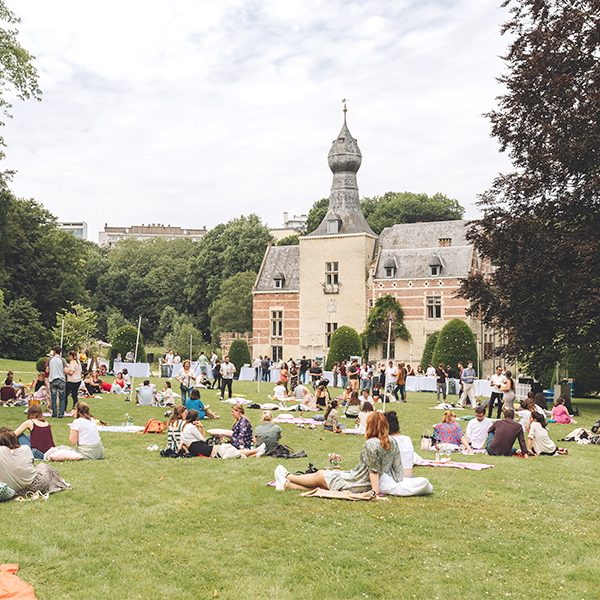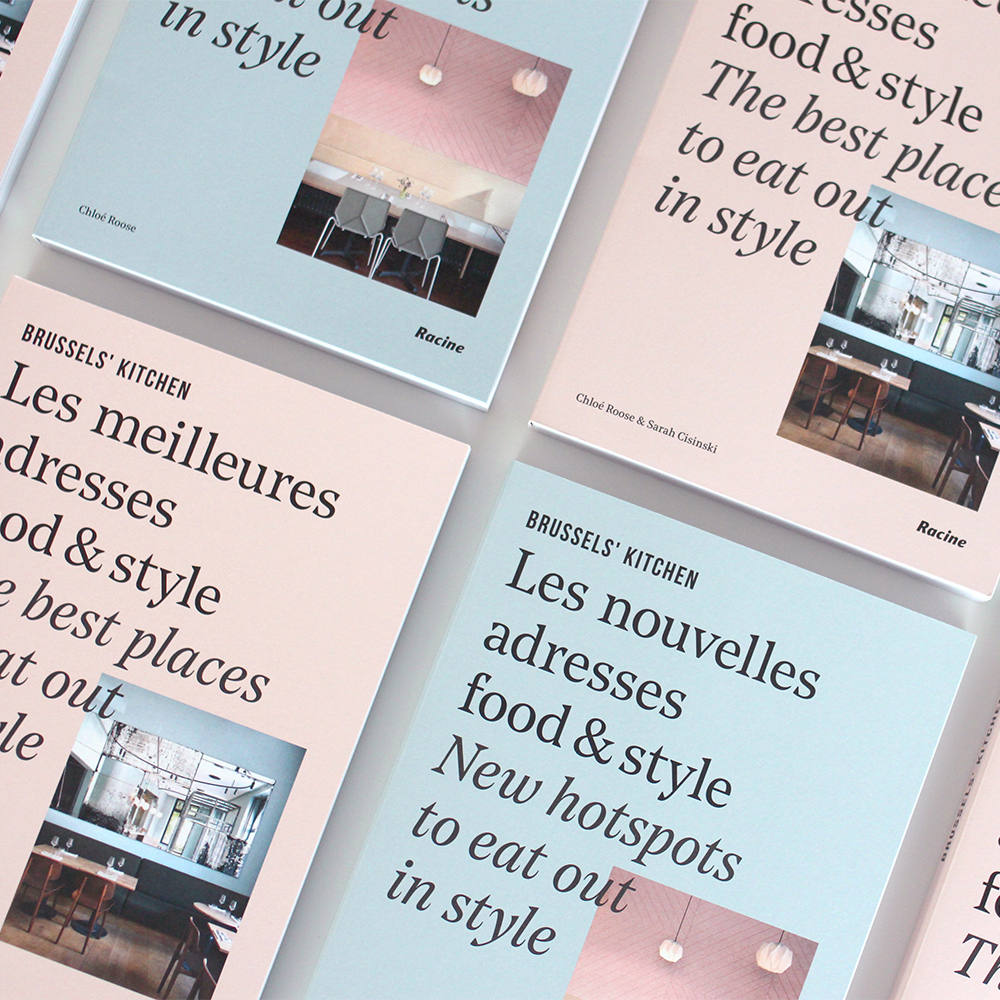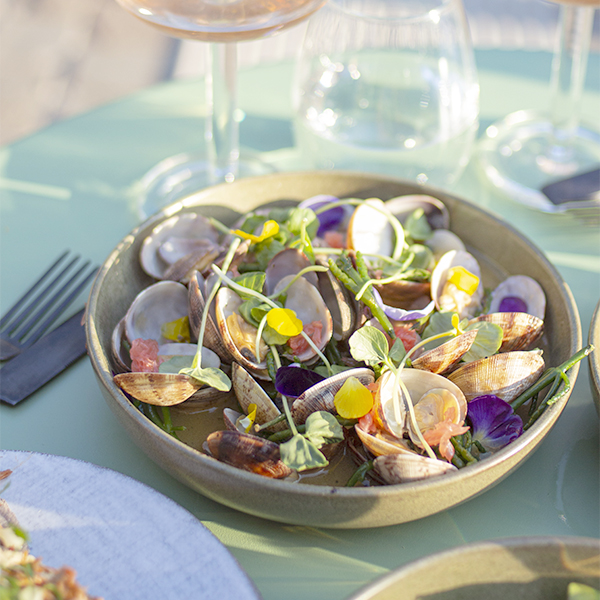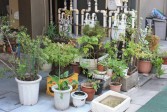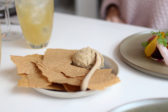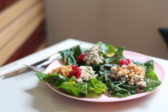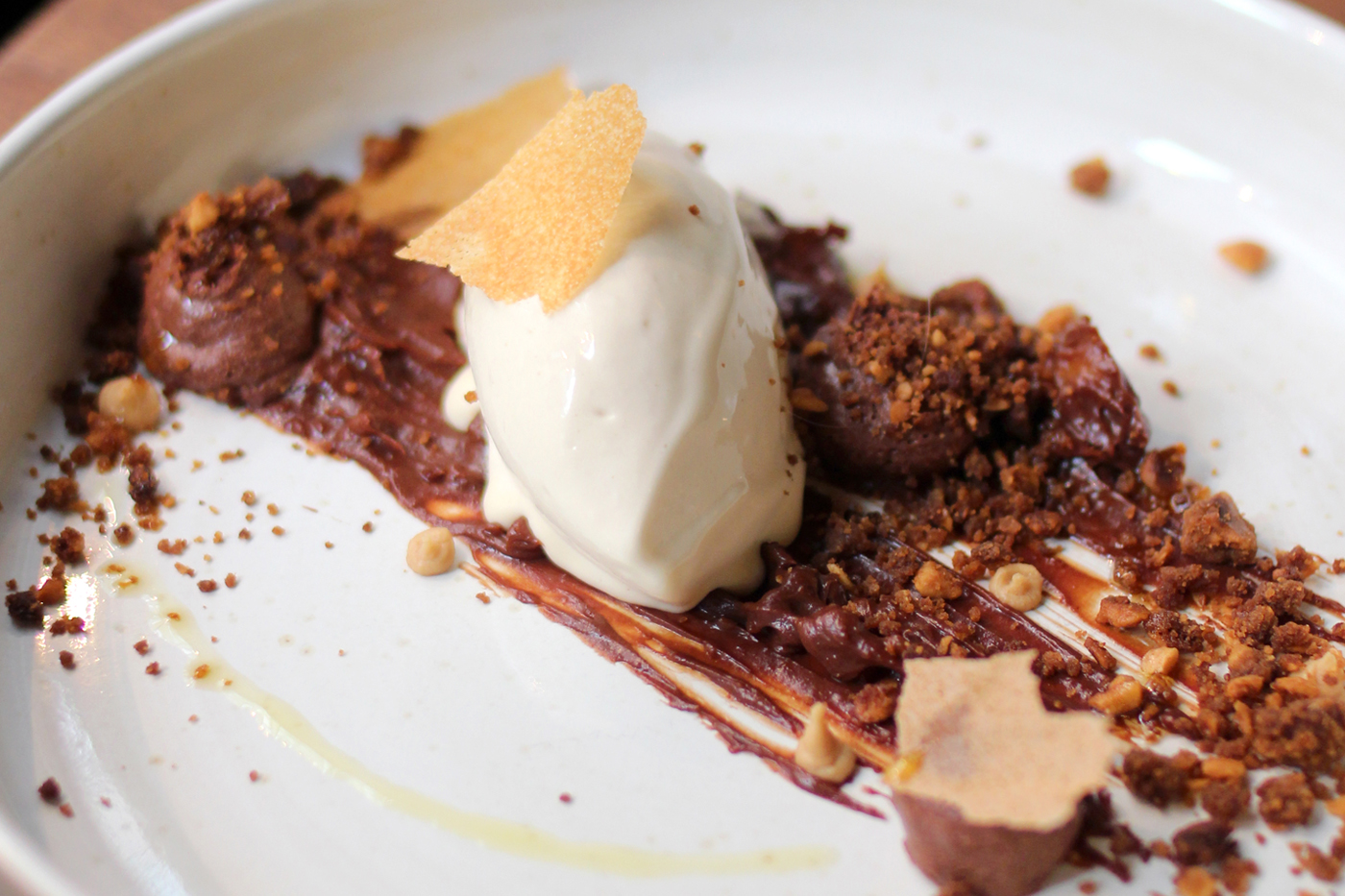
Chocolate mousse:
250g of dark chocolate
6 eggs
50ml of water
120g icing sugar
Chocolate hazelnut cream:
80g of icing sugar
300g full cream
at room temperature
150g of roasted hazelnuts
175g of chopped dark chocolate
Whipped cream with Tonka:
1 litre of whole liquid cream (40%)
110g icing sugar
1 tonka bean, grated
Hazelnut crumble:
110g of butter ointment
110g brown sugar
3g of fleur de sel
150g of hazelnuts
110g of flour
Chocolate, hazelnut and whipped cream with Tonka
Chocolate mousse
In a bowl, put the chocolate and water, and melt gently over boiling water. Separate the yolks and whites from the eggs, and make a ribbon with the egg yolks and sugar: whisk the sugar and yolks well until you obtain a foamy, smooth and homogeneous texture. Once the dark chocolate has melted, add it to the ribbon. Then add this mixture to the egg whites and mix gently so as not to “break the whites”, then store in the fridge.
Chocolate hazelnut cream
Heat 80-100g of sugar with a tablespoon of water. When the mixture starts to bubble, you get the syrup. Let it cook until the bubbles decrease and the caramel starts to color. Once the coloring begins, remove from the heat. Let cool until warm and stir in the cream at room temperature. Stir well until a caramel cream is formed. Add the hazelnuts, then the chopped chocolate and stir until it blends into the cream. If the mixture is not hot enough for the chocolate to blend in, return the mixture over to the water bath and mix well.
Whipped cream
Using an electric mixer, make the whipped cream by mixing the whole cream, icing sugar and grated Tonka bean. You can also replace the whipped cream with ice cream, as shown in the photo.
Crumble
Mix all the ingredients by hand until you obtain a thick paste. Spread on baking paper and bake in the oven at 170 degrees. After 10 minutes, remove from the oven and stir, then put back in the oven for another 10 minutes and stir again.
Can you tell us more?
Like all cooks, at some point you want to have your own place, have no limits. So this restaurant was created primarily to have that freedom we’d been longing for. We created it with people with whom we had already worked a lot. We have a beautiful friendship and there’s a great working atmosphere.
I left Moldavia and started here the old-fashioned way, first by washing dishes, then as a cold clerk and then I gradually worked my way up the ladder.
I worked at the Wine Bar, then in a lot of restaurants, and then I met Vladimir Litvine, and I took over Odette’s kitchens. It was my first job as a real chef, until October 2019, for three years.
I wanted to rediscover the pleasure of being close to the customer, of having a small restaurant where you are always in touch, with a nice atmosphere. And then we heard that L’Idiot du Village was up for grabs and that was the beginning of the adventure of La Bonne Chère.
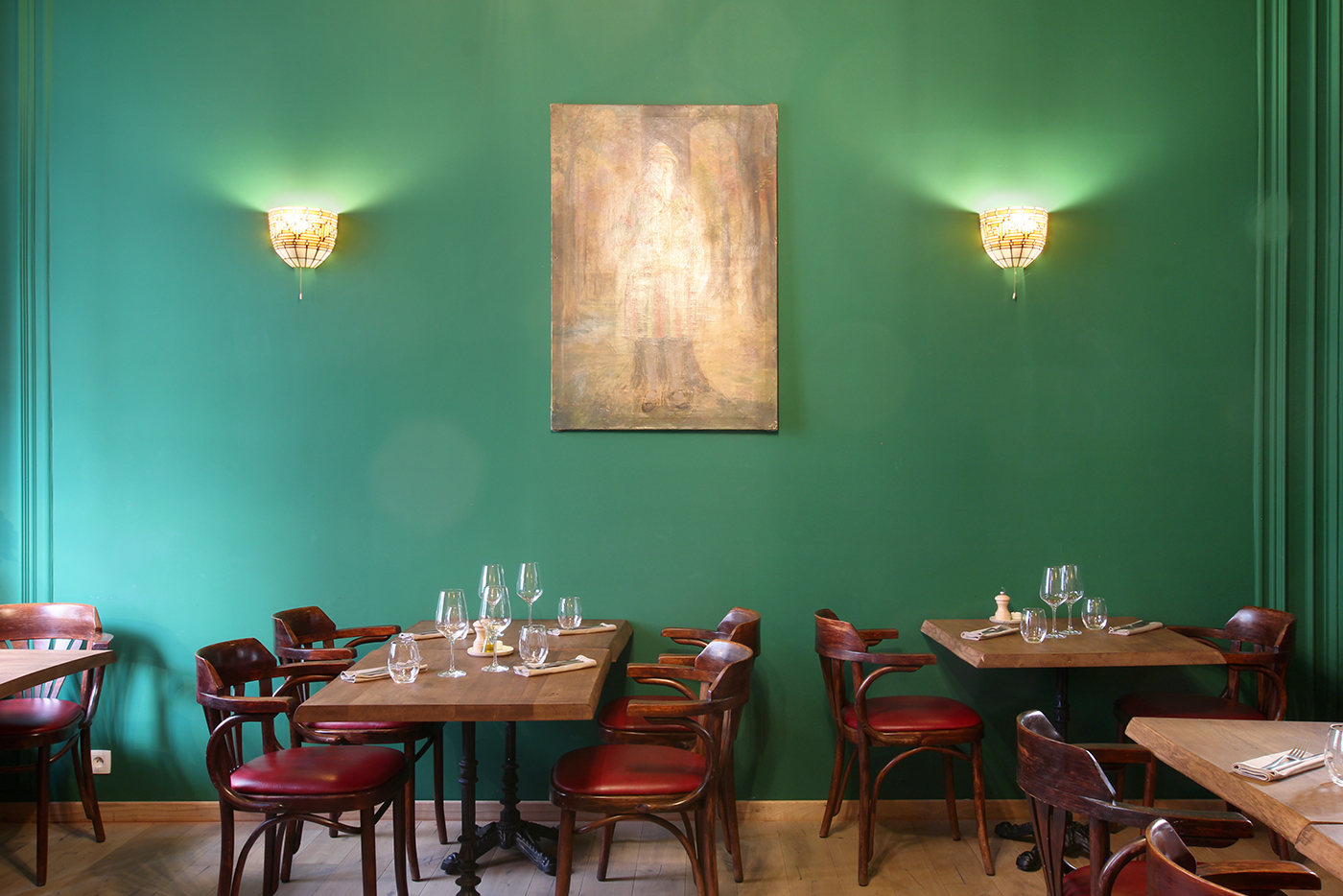
Can you tell us more?
Like all cooks, at some point you want to have your own place, have no limits. So this restaurant was created primarily to have that freedom we’d been longing for. We created it with people with whom we had already worked a lot. We have a beautiful friendship and there’s a great working atmosphere.
I left Moldavia and started here the old-fashioned way, first by washing dishes, then as a cold clerk and then I gradually worked my way up the ladder.
I worked at the Wine Bar, then in a lot of restaurants, and then I met Vladimir Litvine, and I took over Odette’s kitchens. It was my first job as a real chef, until October 2019, for three years.
I wanted to rediscover the pleasure of being close to the customer, of having a small restaurant where you are always in touch, with a nice atmosphere. And then we heard that L’Idiot du Village was up for grabs and that was the beginning of the adventure of La Bonne Chère.
Your strongest food memory?
The two best restaurants I’ve had the chance to eat in in my life were Alexandre Gauthier’s La Grenouillère and Ferran Adria’s Tickets in Barcelona. La Grenouillère was really a trip. What impressed me was this little ball of roast chicken. He had made a rather compact mayonnaise, a bit like a meringue. I don’t know, it had a very pleasant texture, very light, it tasted like roast chicken. There was nothing to decorate it with, there was nothing at all, there was just a ball that you put in your mouth and it exploded. A real explosion of flavor.
At Tickets I had the tuna with the nori leaf, like a nori crumble that was put on top of the tuna. And then of course their world-famous olive sphere. And the crab with the pepper and bisque mousseline, that was great too.
These are things that impressed me by their simplicity too. Even if they have Michelin stars, at Tickets it was a very cool atmosphere, there were also plastic tables, a special atmosphere, and it’s still one of the best restaurants in the world. I also tasted a mussel stuffed with a kind of Iberian ham jelly, and it was the surf-turf combination that marked me the most in my life. A good mussel and a good broth. No decoration, no fuss, everything was based on taste.
But the very first one was La Sauce, in Flanders, two stars. I remember their foie gras, ginger, yuzu and chocolate. Those four flavors. That’s what impressed me the most. And at the Sea Grill with their lobster press. There are only four in the world, all made by Christofle. They’ve got four in the world and one at the Seagrill. And the service was just remarkable.
Your favorite place to eat out in Brussels?
203 is one of my favorite places in Brussels. And also the Wine Bar for their mustard kidneys, and Les Caves d’Alex for their rib-eye steak and French fries.
But the last place I fell in love with was Little Paris, in Waterloo. Once again, it was the simplicity, the casual service, the atmosphere. The taste and the flavors. The decoration is not in the foreground, but what is on the plate is perfection, in the seasoning, in the cooking. It’s the kind of restaurant I love the most. That’s the basis. My favorite restaurants are those with giblets, that’s what I love to eat. I remember pig’s feet, traditional type of cuisine. I love it, but you have to know how to work it. And I thought it was great because he mastered everything from start to finish.

